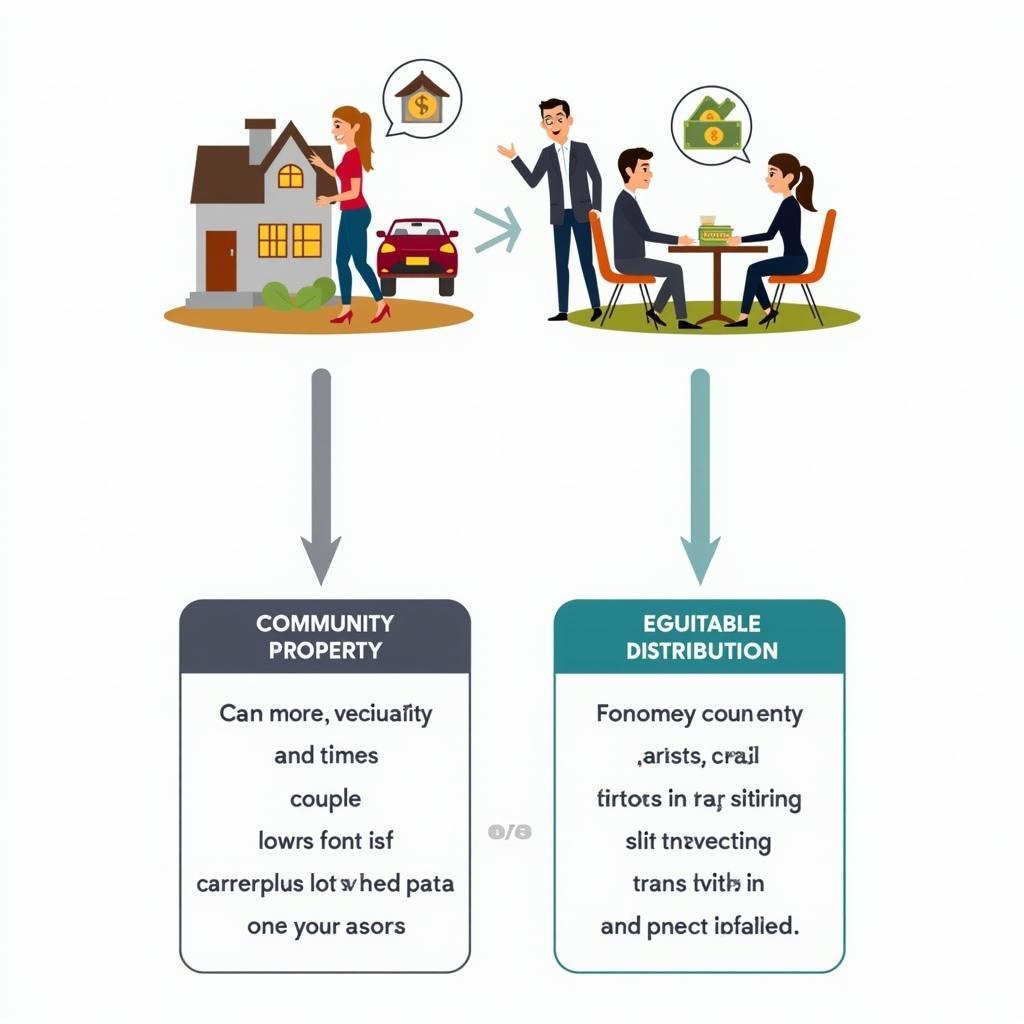Divorce Procedures: A Comprehensive Guide
January 11, 2025Divorce, the legal dissolution of a marriage, can be a complex and emotionally challenging process. Understanding the procedures involved is crucial for navigating this difficult time. This guide provides a comprehensive overview of the steps involved in filing for divorce.
Understanding the Basics of Divorce Procedures
Several key aspects form the foundation of divorce procedures. These include residency requirements, grounds for divorce, and the division of assets and debts. Residency requirements vary by state, but generally, one spouse must have resided in the state for a certain period before filing. Grounds for divorce can range from “no-fault” (irreconcilable differences) to fault-based grounds like adultery or abandonment. The division of assets and debts, often a contentious issue, depends on factors like state laws (community property vs. equitable distribution) and the length of the marriage.
Residency Requirements and Grounds for Divorce
Before initiating divorce proceedings, it’s essential to understand your state’s specific residency requirements. These requirements determine where you can file for divorce. Additionally, the grounds for divorce, the legal reasons for ending the marriage, play a significant role in the process. Some states are “no-fault” divorce states, meaning you don’t need to prove fault to dissolve the marriage.
Division of Assets and Debts in Divorce
One of the most significant aspects of divorce procedures is the division of assets and debts. This process can be complex, involving factors such as property acquired during the marriage, separate property brought into the marriage, and any debts accumulated. Understanding the principles of equitable distribution or community property, depending on your state’s laws, is essential.
 Dividing Assets and Debts during Divorce Proceedings
Dividing Assets and Debts during Divorce Proceedings
Filing for Divorce: Step-by-Step Guide
The divorce process typically begins with filing a petition or complaint for divorce with the court. This document outlines the reasons for the divorce, requests for custody and support, and proposes a division of assets and debts. After filing, the other spouse is served with the papers and given an opportunity to respond.
Serving the Divorce Papers and Responding
Once the initial petition is filed, the other spouse must be formally notified, a process known as service. This ensures they are aware of the proceedings and have the opportunity to respond. The responding spouse can agree with the terms of the petition or file a counter-petition outlining their own requests.
 Serving Divorce Papers and Responding to the Petition
Serving Divorce Papers and Responding to the Petition
Negotiation, Mediation, and Trial
Many divorces are settled through negotiation or mediation, avoiding the need for a trial. Negotiation involves discussions between the parties and their attorneys to reach an agreement. Mediation involves a neutral third party who facilitates communication and helps the couple reach a mutually acceptable solution. If an agreement cannot be reached, the case proceeds to trial where a judge makes the final decisions.
Conclusion
Navigating divorce procedures requires a clear understanding of the legal steps involved. From filing the initial petition to potentially going to trial, each stage demands careful consideration. By understanding the process and seeking legal counsel, you can navigate this challenging time more effectively and achieve a fair resolution. Remember, understanding your state’s specific laws and procedures regarding divorce is paramount.
FAQs about Divorce Procedures
-
How long does a divorce take? The duration of a divorce varies depending on the complexity of the case and whether it’s contested.
-
What are the grounds for divorce in my state? Grounds for divorce vary by state. Consult with an attorney to understand your state’s laws.
-
How are assets and debts divided in a divorce? Asset and debt division depends on state laws and factors like the length of the marriage.
-
What is the difference between legal separation and divorce? Legal separation is a formal arrangement where couples live apart but remain legally married, while divorce legally ends the marriage.
-
Do I need a lawyer for a divorce? While not legally required, having a lawyer is highly recommended to protect your rights and interests.
-
What is the role of a mediator in a divorce? A mediator helps facilitate communication and negotiation between the divorcing parties.
-
How much does a divorce cost? The cost of a divorce varies based on factors like attorney fees, court costs, and the complexity of the case.
Need further assistance? Contact us at Phone: 0396443476, Email: [email protected] Or visit our address: 23 Tháng 3, Đắk Nia, Gia Nghĩa, Đắk Nông, Việt Nam. We have a 24/7 customer support team.